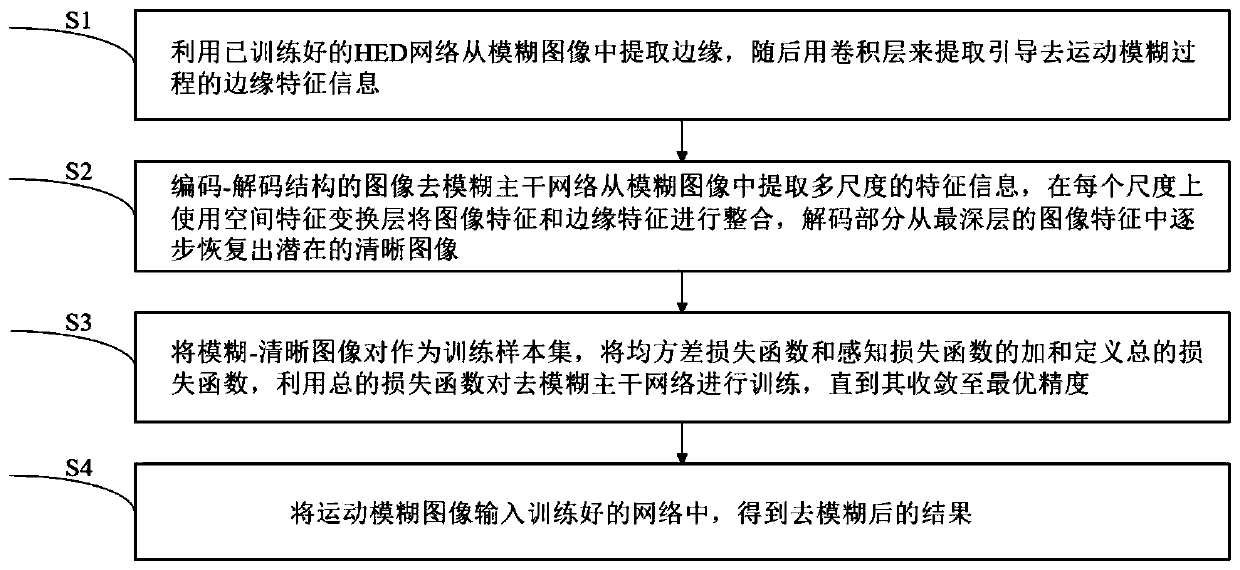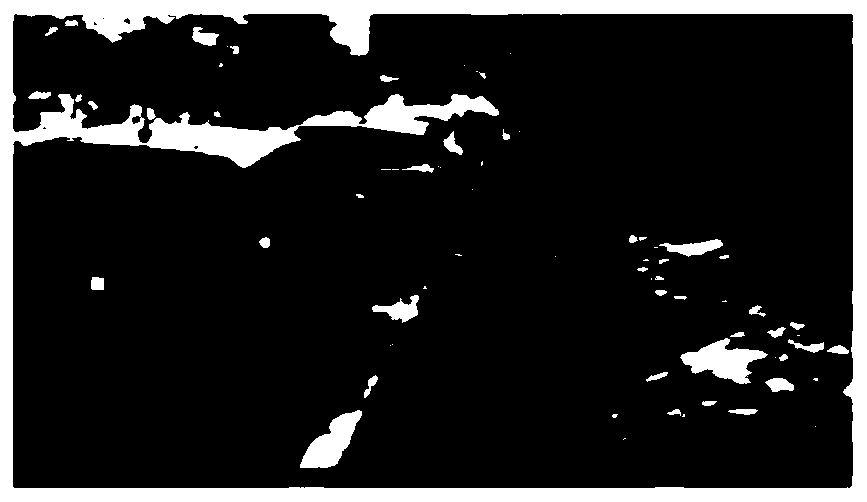Edge-based deep learning image motion blur removing method
A technology of motion blur and deep learning, applied in the field of image restoration, can solve the problem of insufficient deblurring of image edges, achieve the effect of improving deblurring effect, strong generalization ability, and simple network structure
- Summary
- Abstract
- Description
- Claims
- Application Information
AI Technical Summary
Problems solved by technology
Method used
Image
Examples
Embodiment Construction
[0042] Embodiments of the present invention will be described in detail below in conjunction with the accompanying drawings.
[0043]Considering the insufficient performance of end-to-end non-uniform deblurring methods based on deep learning at the edge, and the feasibility of traditional deblurring methods to introduce image prior knowledge to narrow the solution space and obtain effective deblurring results, this paper The embodiment proposes a deep learning image deblurring method using edge information as auxiliary information, so that the deblurring effect at the edge is further improved. Compared with the multi-scale defuzzification network architecture, this embodiment only uses a single-scale network architecture, which greatly reduces the complexity and parameter quantity of the network. Compared with most single-scale deblurring network architectures, this embodiment introduces edge information to make the deblurring process pay more attention to edge regions. Compa...
PUM
 Login to View More
Login to View More Abstract
Description
Claims
Application Information
 Login to View More
Login to View More - R&D
- Intellectual Property
- Life Sciences
- Materials
- Tech Scout
- Unparalleled Data Quality
- Higher Quality Content
- 60% Fewer Hallucinations
Browse by: Latest US Patents, China's latest patents, Technical Efficacy Thesaurus, Application Domain, Technology Topic, Popular Technical Reports.
© 2025 PatSnap. All rights reserved.Legal|Privacy policy|Modern Slavery Act Transparency Statement|Sitemap|About US| Contact US: help@patsnap.com



